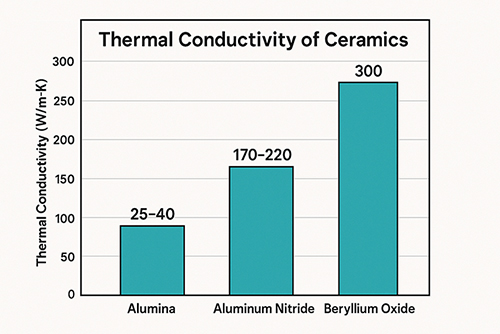An Introduction to Ceramic Injection Molding

Introduction
Ceramic injection molding (CIM) is a ceramic manufacturing process using injection molding technology to produce complex and intricate ceramic parts, especially for those that are difficult or impossible to produce with traditional ceramic manufacturing methods. CIM has gained popularity in recent years due to its ability to produce high-quality ceramic components in large quantities, quickly, and cost-effectively. This article is going to explore the process and advantages of ceramic injection molding. Hope that you can have a deep comprehension of this beneficial manufacturing process.
How to Make Ceramics by CIM?
Ceramic injection molding is similar to plastic injection molding with the following procedures.
- Prepare a ceramic powder mixture.
- Inject the mixture into a mold using a machine under high pressure to fill the mold cavity and produce a green part.
- Remove the green part from the mold and subject it to debinding, which involves removing the binder used in the injection molding process to leave behind a porous green part.
- Sinter the green part by heating it to a high temperature in a furnace, causing the ceramic particles to bond together and form a solid, dense part.
Finish the part using operations such as polishing, coating, or machining to achieve the desired surface finish and dimensional accuracy.
Finally, you can get ceramics that possess high strength, hardness, and resistance to wear, corrosion, and high temperatures, and they are ideal for use in a wide range of applications, including aerospace, automotive, medical, and electronic industries.
 [1]
[1]
Figure 2. Ceramic Injection Molding Process
What Are the Benefits of CIM?
Ceramic injection molding comes with countless benefits.
- More Advanced: One of the main benefits of ceramic injection molding is its ability to produce complex geometries and intricate designs that are difficult to achieve with other manufacturing methods. This process can produce parts with high precision and tight tolerances. For example, CIM can produce parts with wall thicknesses as thin as 0.2 mm and features as small as 0.1 mm.
- More Sustainable: CIM uses less material and energy than traditional ceramic manufacturing methods, which makes it a greener option for manufacturers. Additionally, CIM is capable of producing parts in large quantities while minimizing material waste due to the precise measurement and control of the ceramic powder mixture. The use of binders also enables the recycling of unused feedstock, further reducing waste.
- Wider Range: Ceramic injection molding also offers a range of material options, including alumina, zirconia, and silicon carbide, among others. These materials have high strength, wear resistance, and high-temperature capabilities, making them suitable for use in a broad range of applications.
Related reading: 5 Processing Methods of Advanced Ceramic Materials
What Are the Challenges of CIM?
Despite its many advantages, ceramic injection molding does present some challenges. One of the primary challenges is the high cost of the equipment and tooling required for the process. Additionally, the production process is complex and requires skilled operators to ensure consistent quality and performance.
Nevertheless, CIM is much more cost-effective than traditional ceramic manufacturing methods. The high level of automation in the process reduces labor costs, while the ability to produce complex parts in one step reduces the need for secondary machining and assembly operations.
Conclusion
Ceramic injection molding is a valuable manufacturing process that offers many benefits, including the ability to produce high-quality ceramic parts with high precision and consistency. Despite its challenges, CIM has found applications in a variety of industries, and its popularity is likely to continue to grow as new applications and advancements in technology are developed.
Advanced Ceramic Materials (ACM) offers advanced ceramics of different types and shapes at competitive prices. There are many more related products on our website.
For more details about performance ceramic materials and their manufacturing, please check https://www.preciseceramic.com/.
Reference:
[1] I. Todd, A.T. Sidambe, 6 - Developments in metal injection molding (MIM), Editor(s): Isaac Chang, Yuyuan Zhao, In Woodhead Publishing Series in Metals and Surface Engineering, 2013, https://doi.org/10.1533/9780857098900.1.109. https://www.sciencedirect.com/science/article/pii/B9780857094209500064
{{item.content}}
LEVE A REPLY
{{item.children[0].content}}
{{item.content}}
LEAVE A REPLY
SUBSCRIBE OUR NEWSLETTER
- Boron Nitride in Cosmetics: Enhancing Performance and Sensory Appeal
- Maximize MOCVD Yield and Purity with Hexagonal Boron Nitride Setters
- What Are the Advantages and Uses of Boron Nitride Ceramic Sheet?
- The Compression Annealing Advantage for Pyrolytic Boron Nitride
- Beyond Insulation: The Surprising Spectrum of Ceramic Thermal Conductivity











